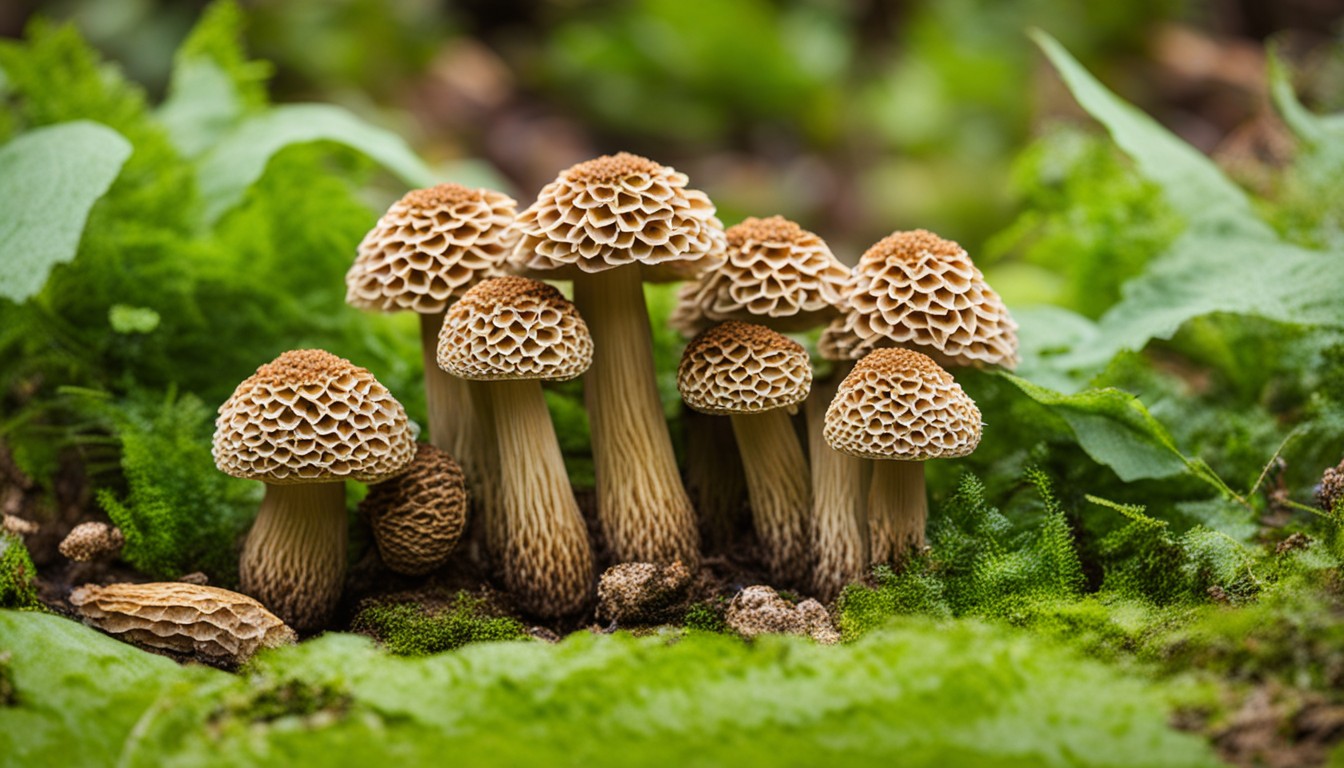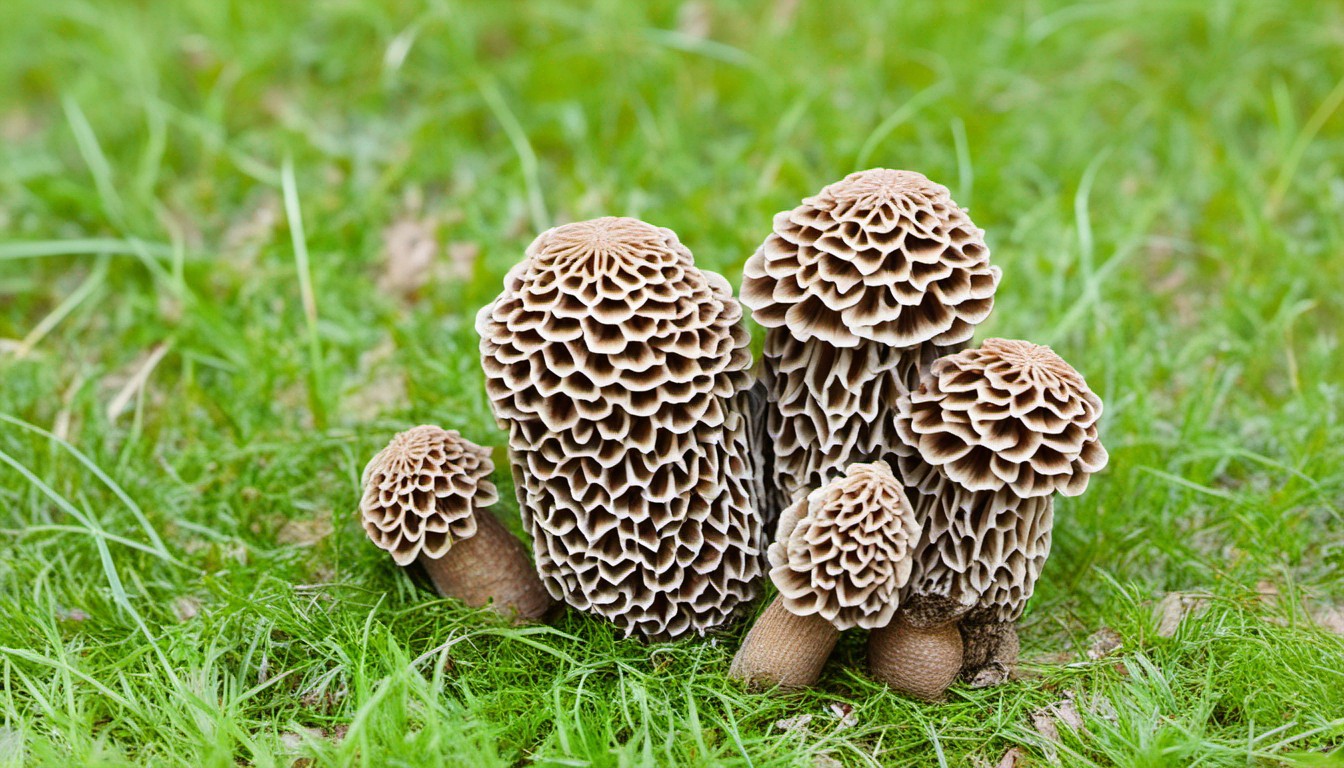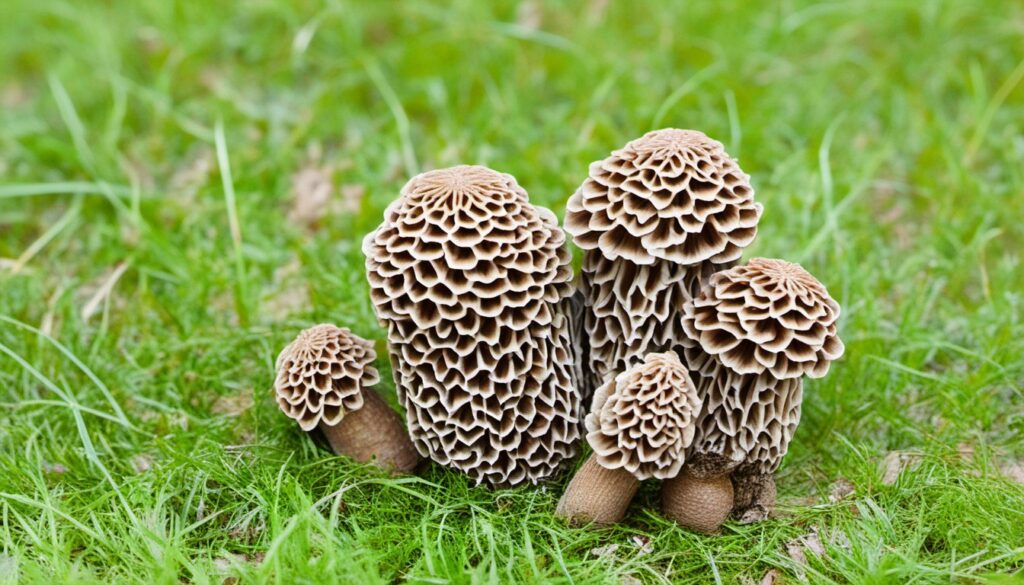Morel mushrooms are a delicacy for many people, and Wisconsin is a prime location for finding them. These mushrooms are highly sought after for their unique flavor and texture. They are also known for their health benefits, as they are high in protein and low in calories.
For those who are interested in finding morel mushrooms in Wisconsin, there are many resources available. One of the most useful resources is a map that shows the locations where morel mushrooms are most commonly found. This map can be used to plan a mushroom hunting trip, and it can also help people to identify the best places to look for morels.
Understanding Morel Mushrooms
Morel mushrooms are a type of edible mushrooms that are highly valued for their unique flavor and texture. They are commonly found in the wild, particularly in the forests and woodlands of Wisconsin. Morels are also known by the scientific name Morchella, and they belong to the family Morchellaceae.
Morel mushrooms are distinguishable by their cone-shaped caps that are covered in pits and ridges. The caps are usually tan or brown, and they can grow up to 4 inches tall. The stems are hollow and white, and they can grow up to 6 inches long. Morels are typically harvested in the spring, although they can also be found in the fall.
Morels are highly prized by chefs and food enthusiasts for their delicate, nutty flavor and meaty texture. They can be used in a variety of dishes, including soups, stews, sauces, and omelets. Morels are also commonly dried and used as a seasoning or added to stuffing mixes.
While morels are a popular culinary ingredient, it is important to note that some species of the Morchella genus are toxic and can cause illness if consumed. Therefore, it is important to properly identify morels before consuming them. It is recommended that individuals consult with an experienced mushroom hunter or mycologist before consuming any wild mushrooms.
In conclusion, morel mushrooms are a highly valued ingredient in the culinary world due to their unique flavor and texture. However, it is important to exercise caution when consuming wild mushrooms and to properly identify them before consumption.
Geographical Distribution in Wisconsin
Morel mushrooms are a popular and highly sought-after delicacy in Wisconsin. They are found throughout the state, but their distribution can be somewhat unpredictable from year to year. Morels grow in a variety of habitats, including forests, grasslands, and even urban areas.
The northern part of the state tends to have a greater concentration of morels, with areas around Hayward, Cable, and Bayfield being particularly productive. Morels can also be found in central and southern Wisconsin, although they may be less abundant.
The timing of morel season can vary depending on weather conditions, but typically begins in late April and lasts through early June. During this time, morel hunters can be found scouring the forests and fields for these prized mushrooms.
It is important to note that while morels are delicious and highly sought after, they should only be harvested by experienced foragers who can properly identify them. Eating the wrong type of mushroom can be extremely dangerous and even deadly.
Seasonal Availability of Morel Mushrooms

Morel mushrooms are a prized delicacy that grows wild in Wisconsin. The season for morels in Wisconsin typically runs from mid-April to mid-June, depending on weather conditions. Morels are most commonly found in wooded areas, particularly around dead or dying trees.
The season for morels can vary from year to year, depending on weather patterns. In years with a mild winter and a warm, wet spring, morels may appear earlier than usual. Conversely, in years with a cold, dry spring, morels may appear later in the season.
It’s important to note that morels are not always easy to find, even during the peak of the season. Experienced morel hunters know that it can take time and patience to locate these elusive mushrooms.
When searching for morels, it’s important to keep an eye out for other signs of spring, such as the emergence of wildflowers and the greening of the trees. Morels often appear around the same time as these other signs of spring.
In summary, the seasonal availability of morel mushrooms in Wisconsin typically runs from mid-April to mid-June, although this can vary depending on weather conditions. Morels are most commonly found in wooded areas around dead or dying trees, and can be difficult to locate even during the peak of the season.
Identifying Morel Mushrooms
Physical Characteristics
Morel mushrooms are easily identifiable by their unique appearance. They have a cone-shaped cap with deep ridges and pits that resemble a honeycomb. The cap can range in color from light tan to dark brown, and it is attached to a hollow stem that is also covered in ridges and pits. The stem is typically white or cream-colored.
The cap of a morel mushroom can range in size from one to four inches in height and width. The ridges and pits on the cap are irregularly shaped and arranged, giving the mushroom a distinct appearance. Morel mushrooms are also known for their meaty texture and nutty flavor.
Habitat
Morel mushrooms are found in a variety of habitats, including forests, fields, and even in urban areas. They are most commonly found in areas with moist soil and decaying plant matter. Morel mushrooms tend to grow in clusters, and they are often found near trees, particularly ash, elm, and oak trees.
Morel mushrooms typically grow in the spring, and they can be found in Wisconsin from late April through early June. They are a popular mushroom for foragers, and many people enjoy hunting for them in the wild.
Overall, identifying morel mushrooms is relatively easy due to their unique appearance and texture. With a little bit of knowledge and practice, anyone can learn to identify this delicious and nutritious mushroom.
Harvesting Morel Mushrooms

Morel mushrooms are a popular delicacy in Wisconsin, and many people enjoy hunting for them in the spring. However, it’s important to follow certain guidelines when harvesting morels to ensure that they are being collected sustainably and legally.
Legal Considerations
Before heading out to hunt for morels, it’s important to be aware of the regulations regarding mushroom harvesting in Wisconsin. The state requires a license to harvest wild mushrooms for commercial purposes, but individuals can collect up to 5 gallons of mushrooms per day for personal consumption without a license.
It’s also important to obtain permission from landowners before harvesting mushrooms on private property. Some public lands may have restrictions on mushroom harvesting, so it’s important to check with the appropriate authorities before heading out.
Sustainable Harvesting Practices
To ensure that morel mushrooms continue to thrive in Wisconsin, it’s important to practice sustainable harvesting methods. This includes leaving some mushrooms behind to allow for spore dispersal and not disturbing the soil or vegetation around the mushrooms.
When harvesting morels, it’s important to cut the stem rather than pulling the mushroom out of the ground. This helps to preserve the mycelium, which is the underground network of fungi that produce the mushrooms.
It’s also important to avoid over-harvesting in a particular area. Morels grow in specific habitats and can take several years to re-establish in an area that has been heavily harvested.
By following these guidelines, mushroom hunters can help ensure that morel mushrooms continue to thrive in Wisconsin for years to come.
Popular Morel Hunting Locations in Wisconsin
Wisconsin is a popular destination for morel mushroom hunting. The state is home to a diverse range of habitats that support the growth of these prized mushrooms. Here are some popular locations for morel hunting in Wisconsin:
1. The Chequamegon-Nicolet National Forest
The Chequamegon-Nicolet National Forest is a popular destination for morel hunters. The forest covers over 1.5 million acres and is located in northern Wisconsin. The forest is home to a variety of tree species, including aspen, birch, and oak, which are all known to support the growth of morels.
2. The Kettle Moraine State Forest
The Kettle Moraine State Forest is located in southeastern Wisconsin and is another popular destination for morel hunters. The forest covers over 30,000 acres and is home to a variety of tree species, including oak, hickory, and maple. Morels can be found in the forest from early April through May.
3. The Northern Highland-American Legion State Forest
The Northern Highland-American Legion State Forest is located in northern Wisconsin and covers over 225,000 acres. The forest is home to a variety of tree species, including aspen, birch, and maple, which are all known to support the growth of morels. Morel hunting is popular in the forest from mid-April through May.
4. The Black River State Forest
The Black River State Forest is located in western Wisconsin and covers over 68,000 acres. The forest is home to a variety of tree species, including oak, hickory, and maple, which are all known to support the growth of morels. Morels can be found in the forest from early April through May.
5. The Brule River State Forest
The Brule River State Forest is located in northern Wisconsin and covers over 47,000 acres. The forest is home to a variety of tree species, including aspen, birch, and maple, which are all known to support the growth of morels. Morel hunting is popular in the forest from mid-April through May.
Overall, Wisconsin is a great destination for morel mushroom hunting. With its diverse range of habitats and abundant tree species, the state offers plenty of opportunities for morel hunters to find their favorite mushrooms.
Safety Precautions While Hunting Morels

When hunting for Morel mushrooms in Wisconsin, it’s important to take certain safety precautions to avoid any accidents or injuries. Here are some tips to keep in mind:
- Dress appropriately: Wear long pants, a long-sleeved shirt, and sturdy shoes or boots with good traction. This will protect you from thorns, ticks, and other hazards while walking through the woods.
- Bring a map and compass: It’s easy to get lost in the woods, so make sure you have a map and compass with you. Familiarize yourself with the area before you go and mark your route on the map.
- Stay hydrated: Bring plenty of water with you, especially if you’re going on a long hunt. Dehydration can cause fatigue, dizziness, and other health problems.
- Avoid poisonous plants: Learn to identify poisonous plants like poison ivy, poison oak, and poison sumac. These plants can cause a painful rash and other symptoms.
- Use a walking stick: A walking stick can help you navigate rough terrain and test the ground for stability before you step on it.
- Be cautious around wildlife: Wisconsin is home to a variety of wildlife, including bears, coyotes, and snakes. Keep a safe distance from any animals you encounter and avoid disturbing their habitats.
By following these safety precautions, you can enjoy a safe and successful Morel mushroom hunt in Wisconsin.
Preserving Morel Mushrooms
Morel mushrooms are a delicacy that can be enjoyed for a short time each year. To make them last longer, they can be preserved in a variety of ways. Here are some common methods for preserving morel mushrooms:
Drying
Drying is the most common method for preserving morel mushrooms. To dry morels, they should be cleaned and sliced in half lengthwise. Then, they can be placed in a dehydrator or oven with the temperature set to 140°F. It usually takes around 6-8 hours to dry them completely. Once they are dry, they can be stored in an airtight container for up to a year.
Freezing
Another way to preserve morel mushrooms is by freezing them. To do this, they should be cleaned and sliced in half lengthwise. Then, they can be placed in a single layer on a baking sheet and frozen for a few hours. Once they are frozen, they can be transferred to a freezer bag and stored for up to six months.
Pickling
Pickling is a great way to add flavor to morel mushrooms while also preserving them. To pickle morels, they should be cleaned and sliced in half lengthwise. Then, they can be placed in a jar with vinegar, water, salt, sugar, and any other desired spices. The jar should be sealed and refrigerated for at least a week before eating.
Canning
Canning is a more involved method for preserving morel mushrooms, but it can be a great way to ensure they last for a long time. To can morels, they should be cleaned and sliced in half lengthwise. Then, they can be packed into jars with a brine solution and processed in a pressure canner. The jars can be stored for up to a year.
Overall, there are many ways to preserve morel mushrooms so that they can be enjoyed for a longer period of time. Each method has its own benefits and drawbacks, so it’s important to choose the one that works best for your needs.

